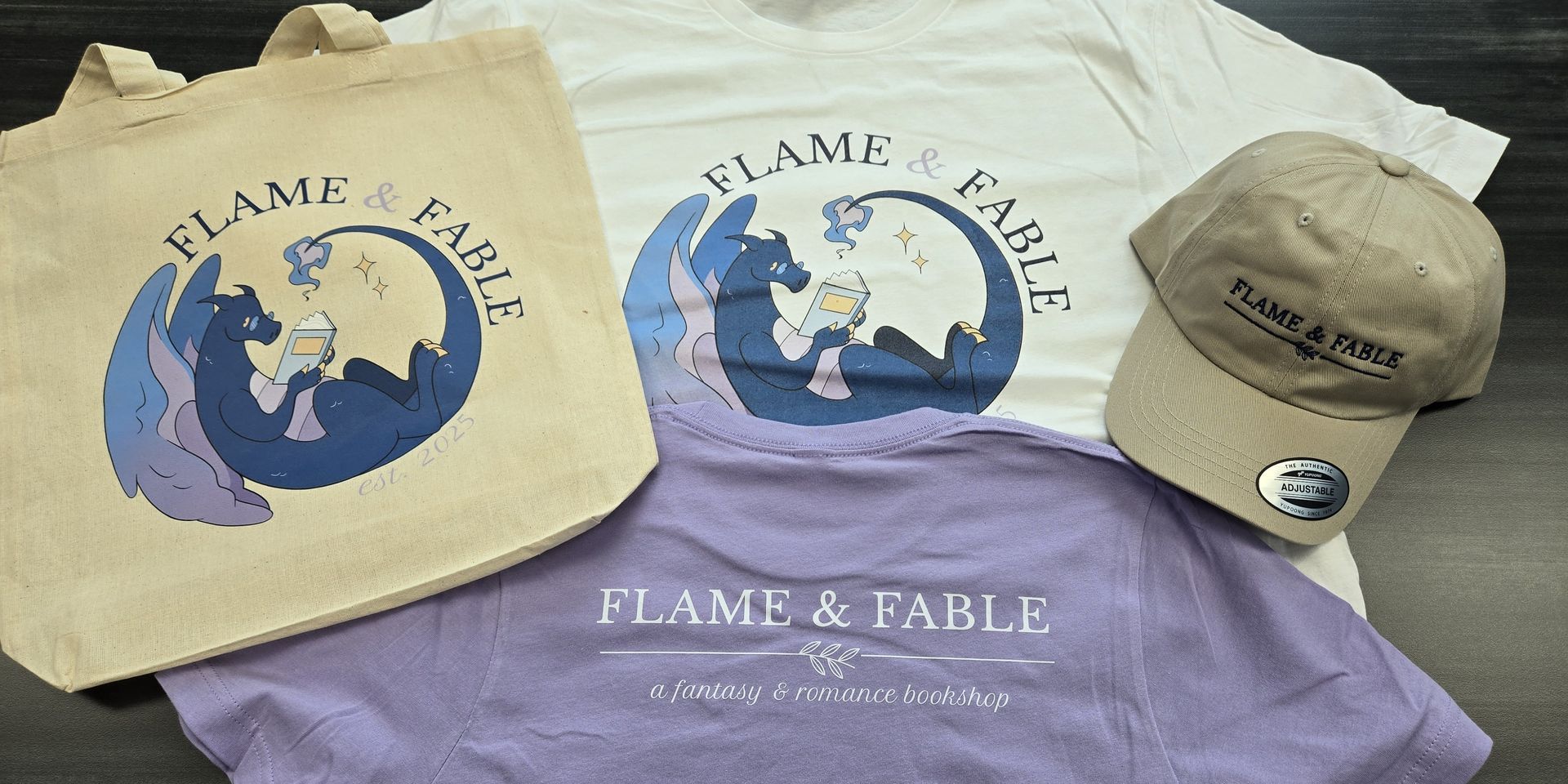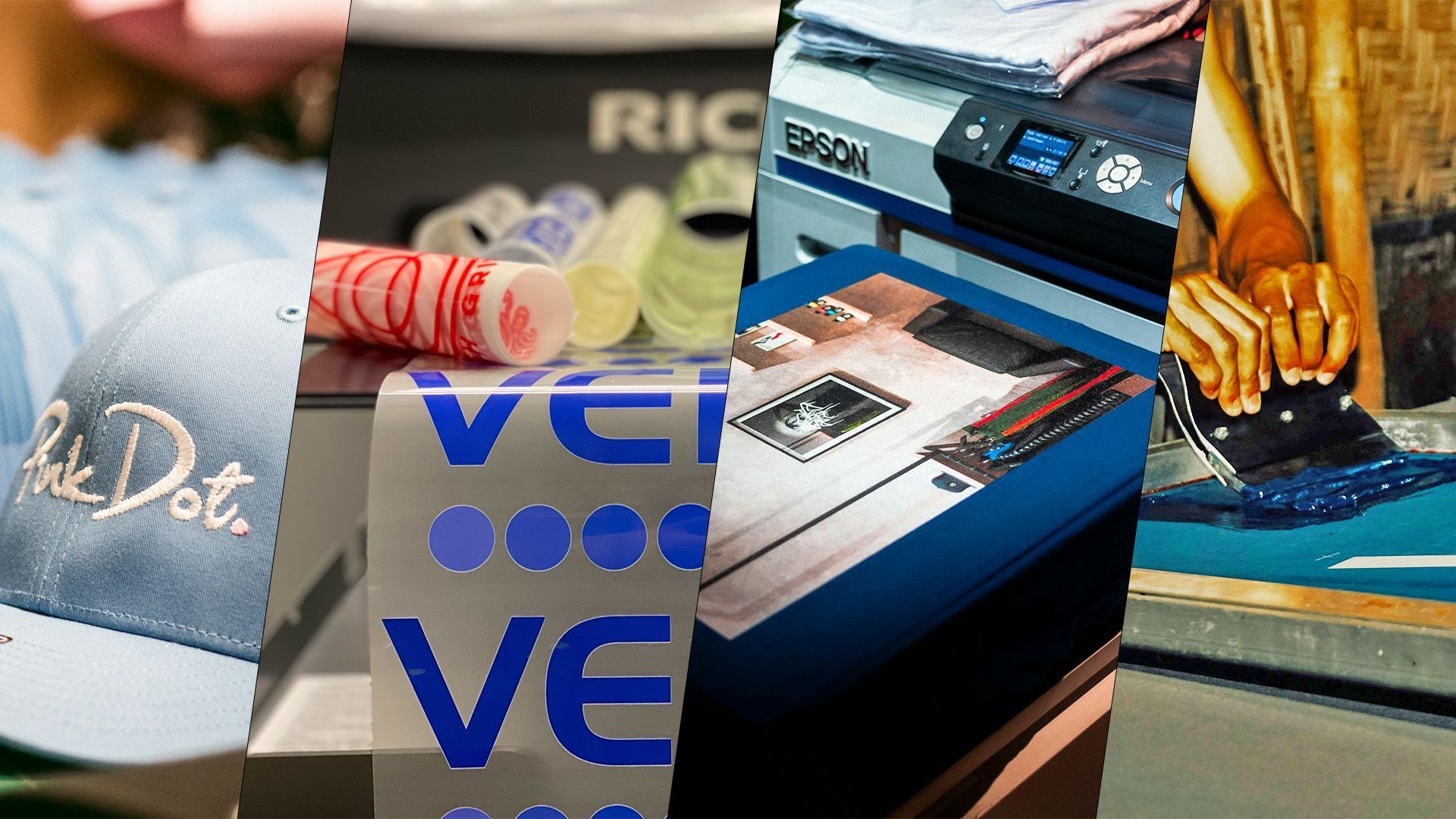Exploring the Benefits of Direct-to-Film for Apparel and Merchandise Designs
Direct-to-Film (DTF) is a process that involves printing images or designs directly onto a film material. This technique is often used in the apparel printing industry so that we can print designs onto various surfaces. In this article, we will dive deeper into the Direct-to-Film printing process and explore the benefits it offers over other printing methods.
The Process
Direct-to-Film involves using a printer that is specially designed to print onto film materials. In our case, the Ricoh Ri 2000 printer is able to print both Direct-to-Film and
Direct-to-Garment (DTG).
For DTF prints, the biggest size film sheet that we can print on is 13x19 inches.
Once the design or image has been printed onto the film, it is then dipped into a pile of powder where it sticks to the ink. This is so once it is baked in our STS Inks Oven, it can easily adhere to any garment material when heat pressed. We then remove the film and press it once more to firmly make sure it is settled in place.
We have a short clip on our
TikTok that shows our process in action.
The Benefits
There are several benefits to using Direct-to-Film compared to Direct-to-Garment (DTG). One of which is that we can print a bulk of small designs per sheet of film in quick succession. If your business needs a logo to appear on the left chest of a polo or quarter-zip, we can have the design printed by the time the garments arrive. With DTG, we would need to wait until the apparel has been delivered to us before we could begin the printing process. Thus, DTF allows us to get a head start and have a quicker turnaround time.
DTF also allows for greater flexibility in the printing process. Designs can be easily adjusted or modified if necessary. If last-minute changes need to be made to the design, a new film can be printed quickly. Once a design is printed directly onto a garment with DTG, that print is final. Additionally, DTF provides more opportunities to adjust the placement of a graphic before it is pressed.
Sometimes with DTG, you may notice a tint or shade of where the pretreatment was sprayed on the apparel. However, Direct-to-Film avoids the need for any pretreat so you may wear your printed shirt proud right out of the box.
The printed designs for film also tend to last longer than DTG when washed and stretched. We also found through our testing that it often looks more vibrant on darker colored garments. With DTG, the garment material slightly soaks in the ink which causes the design to appear a little less vibrant.
With DTG, it is recommended that the apparel is made out of 100% cotton. But with DTF, there are very few limitations on what type of material the transfers look best on.
It is not just shirts that we can print on, we allow our customers to have their designs printed on other kinds of merchandise like bookbags, tote bags, aprons, and more.
Email or give us a call at (216) 671-2222 to get more information on what else we can print on.
Conclusion
Direct-to-Film printing is a reliable and efficient method for printing designs onto various merchandise. The process involves using a specialized printer to print onto a film material that is then dipped in a powder and baked before being pressed onto the garment. The benefits include its ability to print a bulk of small designs in quick succession, flexibility in the printing process, and the ease with which designs can be modified. Overall, DTF offers a versatile and cost-effective solution for businesses looking to print designs onto a wide range of merchandise.



